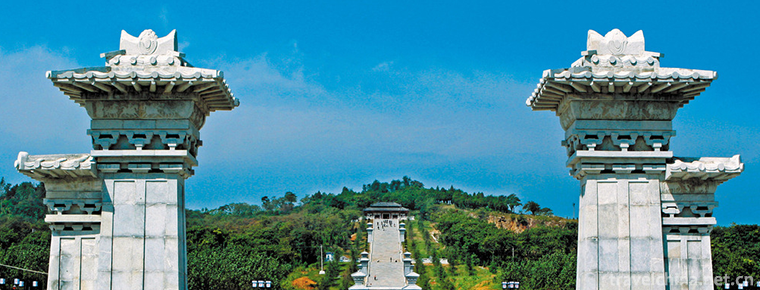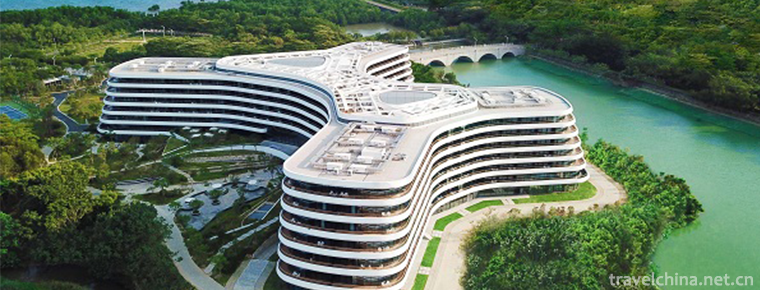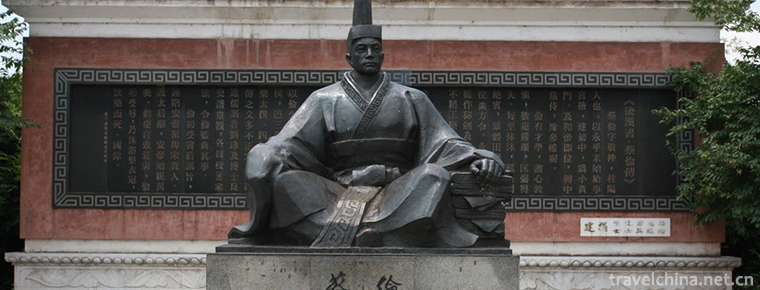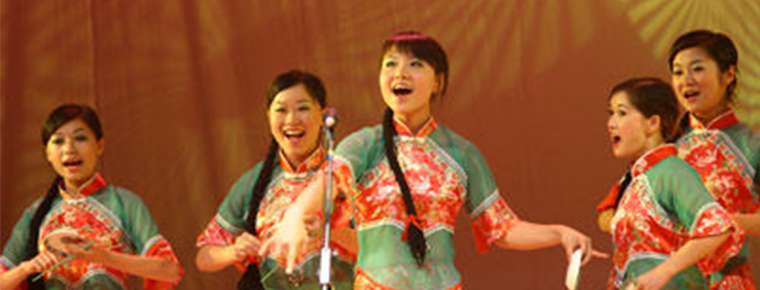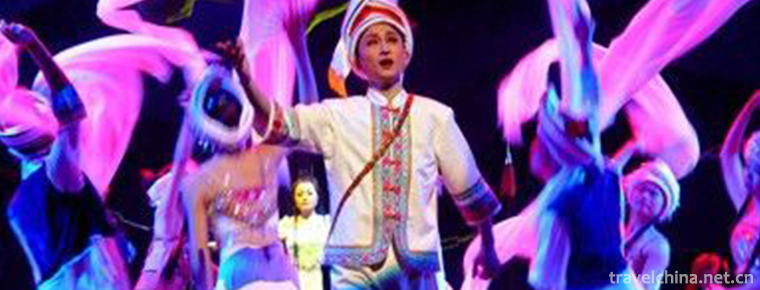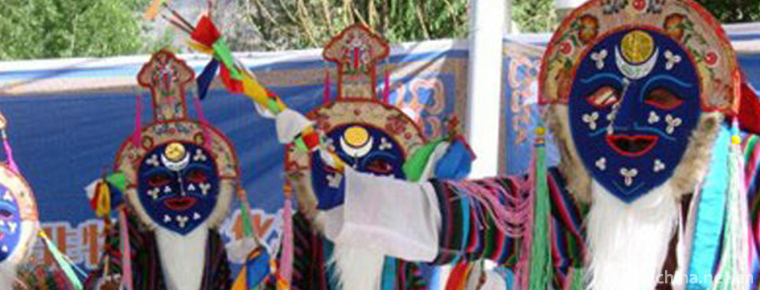Ancient Town of Yi Nationality
Ancient Town of Yi Nationality
The ancient town of Yi people is located in the north of Yongan Avenue, the west of Sun Li Park, the east of Longchuan River and the south of Chuda Expressway in Chuxiong Economic and Technological Development Zone, Yunnan Province. Covering an area of 3161 mu , with a total construction area of 1 million square meters, the project was started in 2004 , and was developed and operated by Weiguang Huitong Group with a total investment of 3.2 billion yuan . It is a cultural tourism project integrating commercial, residential and cultural tourism. The ancient town of Yi people is a special town with the platform of ancient architecture and the soul of Yi culture. It integrates many functions such as cultural scenic spots, tourist distribution centers and city meeting rooms. It has become a bright city business card of Chuxiong.
In 2017, there were 11.5 million tourists in the ancient town of Yi, which solved nearly 20,000 people's employment and living conditions, and leveraged 10 billion yuan of investment in upstream and downstream industries. In the first half of 2018, the ancient town of Yi people received 6.4516 million tourists, which became an important engine for Chuxiong's local industry development and employment creation relying on cultural tourism.
brief introduction
The ancient town of Yi people continued the original style of Dejiang City in architectural style and reproduced the prosperity of the Southern Song Dynasty. Architectural style of the ancient town collects the style of Yi people's houses in Yunnan, Guizhou and Sichuan, and digs deeply into Chuxiong Yi culture. Referring to the traditional Yi village architectural design, Bimo House, Suni House and Girl's House are preserved here. In addition, the construction of Yis tribal characteristic blocks, the formation of performance teams, the performance of "Fire Ceremony" every night, the development of hotels, inns, to build a real tourism business complex and tourism distribution base.
In the ancient town of the Yi people, every night the Yi people will dress up, sing the Yi family tune, dance the left foot dance to welcome the guests. In Liuzu Square, folk artists spray thunder and fire, play torches and display special effects; in the gourd corridor, they feel the melody of the Yi Yueqin and Sanxian, and listen to the beautiful singing of the Yi family's love songs; in the tribal square, the activities of singing, splashing water and reciting brides are splendid.
Every major festival, the ancient town of the Yi people becomes an ocean of joy. Every year on June 24 of the lunar calendar, people from all over the world gather here to celebrate the Torch Festival. Torch Festival, which inherits thousands of years, is not only the most grand annual festival in the region, but also the grand stage for displaying the national culture.
Yixiang Love Song is a kind of original eco-song and dance accompanying meal tourism product of Yi nationality, which is created by Weiguang Huitong with the theme of "Long Street Banquet every day, Night Torch Festival". Through the special dining environment of the connected ring-shaped water suspension tower, the characteristic dish of "Eight Big Bowls of the Yi Family" creates and reproduces the dining culture of the Yi people who arrange long street banquets for their fellow nationalities to gather together and sincerely entertain guests. In addition to tasting the delicacies of the Yi family, the performances of the Central Water Pavilion Stage are more splendid and colorful - jumping dishes, toast songs, costume exhibitions, bride guessing interaction and so on, so that visitors can enjoy the delicacies while feeling the original flavor of the Yi people.
The embroidery pattern of the Yi nationality is exquisite and colorful, which is the most representative cultural expression and carrier of the Yi nationality, and also an important part of the traditional Chinese folk arts and crafts. The Yi embroidery products in the ancient town of Yi people have formed nearly a hundred business scales. These tourist commodities have strong national characteristics, distinct regional characteristics, rich cultural connotations, and are deeply loved by tourists at home and abroad.
In addition, the ancient town of Yi people is equipped with courtyard area, main cultural park of Yi people, bar street, large catering area, Inn area, etc. Business forms are rich, such as shops, inns, restaurants, snacks, tea bars, bars and so on. After centralized construction, several thematic business blocks have been formed, such as bar street, ASEAN style street, Korean style street and so on. The whole town has six tourism functions: food, housing, transportation, travel, shopping, entertainment, and fully meets the various needs of the market.
The ancient town of Yi people not only conforms to the development of new urbanization in China, but also embodies the logic of the development of new ancient buildings, cultural awe, and characteristic tourist attractions, which brings a lot of imaginable space for the development mode of Characteristic Towns in other areas.
_Create a cultural town that meets the market demand and highlights unique themes and customs. Then take the ancient town as the carrier, build a cultural tourism distribution platform to enhance attraction, and then drive the leisure and vacation around the ancient town. The development model represented by Weiguang Huitong Yi ancient town has become a new attempt to develop tourism industry.
geographical position
The ancient town of Yi people is located in the north of Yongan Avenue, the west of Sun Li Park, the east of Longchuan River and the south of Chuda Expressway in Chuxiong Economic and Technological Development Zone.
Regional advantages
Chuxiong is located in the center of the "cultural corridor of the Yi people" and is the gateway to the "golden line of tourism in Western Yunnan". It has the geographical advantages of "one state, three cities" (Kunming, Dali and Panzhihua), and is one of the two "Yi Autonomous Prefectures" in China.
The Culture and Distribution of the Yi Nationality
The Yi nationality is one of the ethnic minorities in China that have written language, calendar and unique traditional culture. The historical and humanistic resources of the Yi nationality are very rich, extensive and profound. There are ten kinds of languages and characters. There are a vast number of documents written in Yi language, including politics, economy, religion, astronomy, calendar, history, geography, medicine and art. The October solar calendar, the tiger cosmology, the concept of male and female, the worship of fire, the Bimo painting, the Bimo Sutra and the epic Meg have exerted great influence on the history of human science and thinking. There are more than 50 branches of the Yi nationality, each of which has rich contents of architectural culture, religious culture, costume culture, singing and dancing culture, folk culture and festival culture.
The Yi people are mainly distributed in Yunnan, Sichuan, Guizhou and Guangxi provinces (regions), with a population of more than 8.2 million.
Because of the lagging development and lack of a display platform, the ancient town of Yi people is situated on the famous "Golden Tourist Line of Western Yunnan" in China, which is not recognized by tourists. It is an uncultivated virgin land.
Development and Construction
Prophase Engineering
The ancient town of Yi people occupied 243 mu in the early stage (i.e. phase 1 and phase 2) with a total investment of 320 million yuan. Construction started at the beginning of 2005 and was successfully exploited by the end of 2006. It has won unanimous praise and become a new highlight of Chuxiong's tourism culture.
The main characteristics of its tourism culture are as follows:
Water Source Square: Water is the source of life. Jingyin Water Lives. The Square shows the culture of Yi water.
Meige Square: Through the sculpture form, it reproduces the essence of the Yi's Creation Epic Meige and the solar calendar culture of the Yi ancestors.
_Peach Blossom Stream: The stream water runs through the central part of the ancient town (Phase 1 and Phase 2). Through various stone bridges, railings and water scenery facilities on the stream, it shows the important historical facts and customs of the Yi people in history.
Wangjiang Tower: It is the landmark building of "Dejiang City" in Dali (Song Dynasty). It gathers together couplet culture and art of painting and calligraphy, and can also be overlooked from a high altitude.
(5) Huotang Hui Square: The Yi people are a "left-respecting and black-worshipping" people who worship fire. They mainly display the fire culture of the Yi people, which is the best place for Yi brothers to step on songs and entertainment.
6. Ancient stage: also known as "Yi Fengyuan", mainly used to show the original ecology of the Yi people's singing and dancing, Bimo stunts and food culture;
_Deyun Square: The achievements of Gao Xiangguo in Dali (Song Dynasty) were expressed through "Deyun Stone" and "Deyun Stele", which highlighted the idea of ruling the country by virtue, and called on the world not to forget their ancestors'precepts and conduct themselves by virtue. At the same time, the historical basis for the later development of Dejiang City was found.
(5) Miyilu Square: The legend of Miyilu is narrated through sculpture, which shows the courage, wit and courage of the Yi people.
_The architectural appearance of the whole town shows the architectural culture of the Yi Chieftain in Yunnan, Sichuan, Guizhou and Guizhou provinces.
Later stage project
As "Yi Ancient Town" is a large-scale cultural tourism real estate project, the three, four, five, six and seven tourism cultural elements are mainly displayed as follows:
(1) Yi Cultural Theme Park (Yi Tribe):
(1) Exhibiting the original ecological architectural culture of the Yi people: such as tile houses, earth exhibition houses, stacking wooden houses, flash houses, Maotao houses and other Yi people's residential buildings.
(2) Exhibiting the original eco-city culture of the Yi people: Planning a commercial street at the entrance of the main gate to display the original eco-city culture of the Yi people, arranging wine shops (liquor-making (liquor, rice wine) technology exhibition, exhibition of the Yi people's wine utensils, tourists'wine tasting activities), tofu houses (tofu production technology exhibition and other special food production). Embroidery room (weaving, dyeing, embroidery process display); wooden, bamboo, musical instruments, silver, lacquerware, iron gourd and other crafts production and display; pharmacy (pharmacy, doctor) to display the Yi medicine culture; tea shop (tea making, baking tea) to display the Yi tea culture.
(3) Demonstrating the original ecological life culture of the Yi people: Planning a proto-ecological village north of Shijing Commercial Street, arranging the living environment of folk houses, threshing fields, girls'houses, wedding houses, Tuzhu temples, village squares, and displaying the original ecological life culture of the Yi people through rice milling, noodles grinding, textile, embroidery, wedding and other activities.
(5) Exhibiting the history and culture of the Yi nationality: displaying the history and culture of the Yi nationality in the form of sculpture, such as displaying the history of Chuxiong as the birthplace of Oriental human beings with a group of apes evolving to human sculptures, displaying the legendary history of the branches of the six ancestors of the Yi nationality with a group of six ancestors sculptures, displaying the history of Chuxiong as the ancient road of Yanma and the ancient road of Teama with a group of Mabang scul
_Weichu Tower (Yiwang Palace): It is used to display the large-scale singing and dancing culture and costume culture of the Yi people. It is also accompanied by the original ecological singing and dancing of outdoor Huotang Hui Square, which will be the essence of the art of singing and dancing of the Yi culture in China.
Bimo Cultural Square: that is, the large-scale "Fire Pond Club Square". Bimo Cultural Corridor is set up in the square, which integrates folk culture and gardens. It is mainly used to display various festival activities of the Yi people.
(5) Tusi Prefecture: Tusi was used by feudal dynasties for the local governing bodies of minority nationalities, and was also a place where the upper culture was concentrated. It was used to show the Tusi culture of Yi nationality and was the place where the indoor theatre was filmed in the film base.
(5) Dejiangcheng: a high-minded feudal land for the famous families of Dali in the Song Dynasty. During the construction of Weichu City, Dejiangcheng (Waicheng) was built in the northwest two miles, and later became the "prime minister in the mountains, the political center of Houliguo". Now, the "Dejiangcheng" style is restored, showing the court and folk culture of Nanzhao (Tang Dynasty) and Dali (Song Dynasty).
(5) Gao Xiangfu: Buildings are arranged for the second entrance courtyard. The front courtyard displays Gao's Xiangfu culture and ancestral temple culture. The back courtyard serves as a wedding banquet hall.
_ancestor temples: the Yi people, the "six ancestors branch" and the "Jiulong myth" say that the Yi people have the custom of "Tuzhu worship". The "six ancestors temple" is set up for the Yi people to worship their ancestors and ancestors. It has become a place for the majority of Yi people to seek their roots and worship their ancestors.
_Temple Fair Square: The east side of the square is the ancestral temple, the west side is the Gaoshi Xiangfu, the square has a stage, the square is an outdoor theatre and singing and dancing venue. It is also a place for temple fairs.
_Qingming River: The river is 8-12 meters wide and can be rowed. The water is deeper and the flow speed is slower. It mainly shows the charm of the water countryside in the south of the Yangtze River.
_Chahua River: The brook is 2-2.5 meters wide and the water is shallower and the flow speed is faster. It mainly shows the charm of the ancient town in the west.
(6) Tourist hotel accommodation reception area: In the "ancient town of Yi people", a hotel accommodation area is planned, which includes 300 standard rooms of five-star Conference Hotel and 300 standard rooms of three-star property hotel. In addition, 40 quadrangle courtyards and Inn courtyards are arranged in the third and fourth stages of Dejiang City. There are 25-30 standard rooms of "member hotels" in each hotel, totaling 1100 standard rooms. With more than 400 standard rooms completed in Phase I and Phase II, the old town of Yi people will be able to accommodate more than 4000 tourists every day.
_Large-scale Yi characteristic catering area: In the third phase, a large catering reception area is planned, with eight quadrangular courtyard restaurants and three to five single-storey restaurants, which mainly receive tourism teams. In addition, a small and medium-sized restaurant is arranged every certain distance in Dejiang City to receive individual tourists.
(5) Tourist commodity distribution center: Some blocks of the ancient town of Yi people will become the largest tourist commodity distribution center in Yunnan. After the completion of some blocks of the ancient town, it will integrate the processing, wholesale, direct marketing and retail of tourism commodities, hold two to three national tourism commodity fairs in the region every year, and become the best area for the future trade of tourism commodities in Yunnan and even in the whole country.
Various kinds of cultural sculptures: Many life interests and many folklore stories of the Yi people are displayed in the form of sculptures.
Other tourism elements: food and culture street, ancient town water system, bar on both sides of water system, tea room, snack street, foreigner street, national handicraft street, tourist commodity street, Yi athletic hall, Yi spa, Yi wedding banquet (which can be considered in Gaoshixiangfu), Yi medicine street and other tourism elements should be reflected in the ancient town of Yi people.
Development Prospect and Characteristics
The Uniqueness of Yi Culture
As time goes on after the ancient town is built, the humanistic culture displayed will make tourists linger and forget to return. Humanistic tourism resources are different from natural scenery tourism resources. The attraction of human tourism resources to tourists is repetitive, while the attraction of natural scenic spots to tourists is single. The "ancient town of Yi people" should highlight the Yi culture and gather and display it in the ancient town, so that business, residence and tourists can experience the extensive and profound Yi culture, which embodies the uniqueness of the whole country and even the world, and the ancient town of Yi people will become the "must-see place to visit Yunnan".
The Charm of Ancient Town
With the passage of time, tourism resources will be as tight as mineral resources. Especially the human tourism resources are non-renewable. According to economists, with the continuous development of the national economy, the per capita GDP (China's per capita GDP in 2005 has reached US$1740) continues to increase. Some experts predict that Chinese tourists will increase from 17% to 30% of the total population around 2018 (China's per capita GDP will reach US$3000 in 2011). It can be imagined that the construction of the ancient town of Yi people is ahead of schedule.
location advantage
The first stop on the back garden of Kunming, the ancient town of Yi people, and the "Golden Tourist Line of Western Yunnan". The number of tourists on this line has reached 10 million, and it is expected that by 2010, the number of tourists on this golden line will reach 18 million to 20 million.
Development Model
The construction of ancient towns of the Yi people conforms to the Party's and government's policy: the construction of ancient towns responds to the call of provincial Party committee, provincial government, State Party committee and state government to vigorously promote the development of cultural tourism industry. After the completion of the "Yi Ancient Town", the number of tourists can reach 2 million per year. The "golf course" development mode, which combines the tourism culture of the "Yi Ancient Town" with commercial and residential areas, will play a very good role in promoting and demonstrating the development of Yunnan's cultural industry.










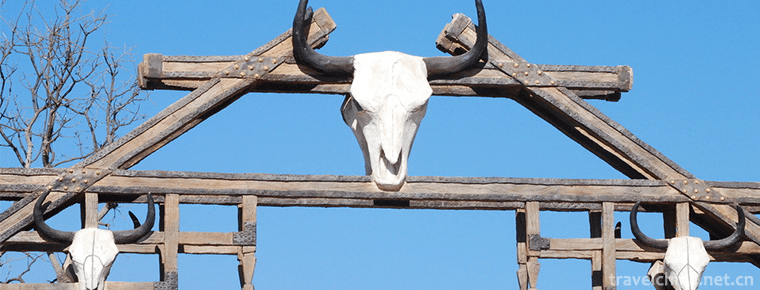
-
Dukezong Ancient City
The ancient city of dkkzong is the best preserved and largest Tibetan residence in China.
Views: 184 Time 2018-10-20 -
Mount Mangdang Han culture tourism scenic spot
Located in Yongcheng City, Henan Province, Mangdao Mountain Han Culture Tourist Area is a national AAAAA-level scenic spot which integrates landscape sightseeing, cultural appreciation and ecological .
Views: 199 Time 2018-12-09 -
Nansha Garden Hotel Guangzhou
Nansha Garden Hotel, a brand-new landmark building in Dawan District and New Nansha, was commissioned on June 20, 2018. The brand of Garden Hotel added a unique creative design hotel..
Views: 253 Time 2018-12-16 -
Lao Leshan Tourist Scenic Spot
Lao Leshan is located in the south of Henan Province, 9 kilometers southwest of Zhumadian City and 8 kilometers west of Queshan County. National Highway 107.
Views: 135 Time 2019-01-29 -
Sun Wu Ancient City Tourist Area
Sun Wu Ancient City Tourist Area is a series of scenic spots, such as Sun Tzu's Art of War City, Wusheng Garden, Ancient City Park and Moat Ring Water System.
Views: 235 Time 2019-02-13 -
Cai Luns Paper making Legend
Cailun Paper-making Stories and Legends are legends circulated in Cailun's fiefdoms, burial sites and experimental sites of Yangxian Longting and surrounding areas..
Views: 206 Time 2019-04-04 -
Hubei Xiaoqu
Hubei Xiaoqu is one of the traditional operas in Hubei Province. It consists of "Hantan Xiaoqu" and "Tianzhao Xiaoqu". Han Tan Opera, also known as "Hankou Tan Opera" and.
Views: 178 Time 2019-05-03 -
Southern Drama
Nan Opera, also known as Nan Opera and Shi Nan Diao, commonly known as "Gaotai Opera" or "People's Congress Opera", is a local opera in Enshi Tujia and Miao Autonomous Prefecture o.
Views: 266 Time 2019-06-07 -
Shannan Menba Opera
Because Shannan Menba Opera directly adopts Tibetan scripts of Tibetan Opera, it is called "Menba Aguiram" by the people, that is, Menba Tibetan Opera. Legend has it that at the end of the 1.
Views: 156 Time 2019-06-13 -
Month also
Dong people's "moon" means collective visiting, which is a social custom in Dong village. The young men and women in one village of the Dong nationality visit another village according to th.
Views: 329 Time 2019-07-16 -
Leshan culture
By the end of 2018, Leshan has 12 mass cultural centers, 12 public libraries, 10 museums, 218 cultural stations and 29 City cinemas. There are 12 free libraries, 12 cultural centers, 218 township cultural stations and 3 museums. 2003 rural libraries and 276.
Views: 365 Time 2020-12-17 -
Yibin transportation
Yibin is a transportation hub city in South Sichuan, which is famous for its comprehensive three-dimensional transportation network of water, land and air. It is located at the starting point of the golden waterway of the Yangtze River and the strategic point of Sichuan Yunna.
Views: 119 Time 2020-12-18

